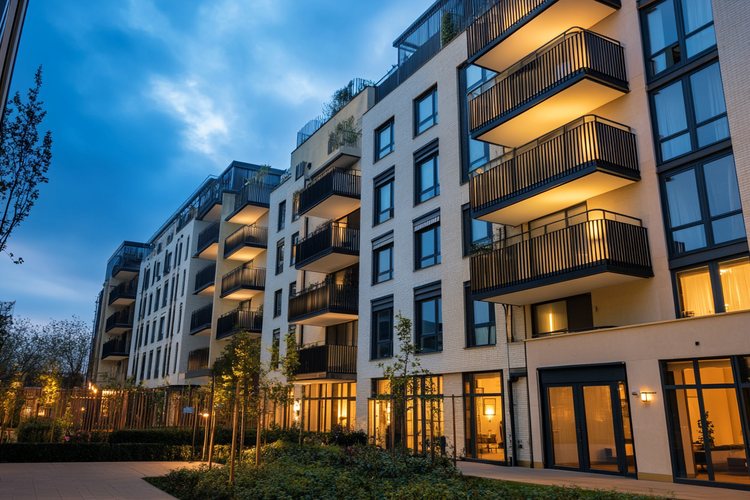Title: Micro-Apartments: The Future of Urban Living?
In the ever-evolving landscape of real estate, a new trend is catching the eye of investors and urban dwellers alike: micro-apartments. These compact living spaces, typically under 400 square feet, are reshaping urban housing markets and challenging traditional notions of what constitutes a home. As cities grapple with housing shortages and skyrocketing rents, micro-apartments offer a potential solution that's both innovative and divisive. Let's delve into this growing phenomenon and explore its implications for the future of urban living.

The typical micro-apartment ranges from 150 to 400 square feet, with clever design features that maximize every inch of space. These units often incorporate multi-functional furniture, such as Murphy beds that transform into desks or dining tables, and utilize vertical space with loft-style sleeping areas. While the size may seem restrictive to some, proponents argue that these compact spaces offer an affordable entry point into desirable urban neighborhoods.
Economic Drivers and Market Demand
The surge in micro-apartment developments is largely driven by economic factors and changing demographics. Millennials and young professionals, who often prioritize location over space, are a key target market for these compact units. In cities where rental prices have outpaced wage growth, micro-apartments provide an opportunity for individuals to live in central locations without breaking the bank.
From an investment perspective, micro-apartments can offer attractive returns. Developers can fit more units into a building, potentially increasing overall rental income. Additionally, these properties often command higher per-square-foot rents than traditional apartments, making them an intriguing option for real estate investors looking to maximize returns in urban markets.
Design Innovations and Challenges
Creating a functional and comfortable living space within such tight constraints requires innovative design solutions. Architects and interior designers specializing in micro-apartments focus on maximizing efficiency and creating the illusion of space. High ceilings, large windows, and light color palettes are common features used to make these small spaces feel more open and airy.
Storage is a critical consideration in micro-apartment design. Built-in cabinets, under-bed storage, and multi-purpose furniture are essential for keeping these compact spaces organized and livable. Some developments also offer shared amenities, such as communal lounges, workspaces, and laundry facilities, to compensate for the limited private space within individual units.
However, designing micro-apartments comes with its own set of challenges. Balancing the need for essential living functions with comfort and aesthetics requires careful planning and often leads to compromises. Critics argue that these small living spaces may negatively impact residents’ quality of life and mental health, particularly in the long term.
Regulatory Hurdles and Policy Implications
The introduction of micro-apartments into existing urban landscapes has not been without controversy. Many cities have minimum size requirements for residential units, which can pose regulatory hurdles for developers seeking to build micro-apartments. Zoning laws and building codes often need to be updated to accommodate these new housing types, leading to debates about appropriate living standards and urban density.
Proponents argue that micro-apartments can help alleviate housing shortages and provide more affordable options in expensive urban markets. However, critics contend that these units may lead to overcrowding and potentially lower the overall quality of housing stock. As a result, cities grappling with housing crises are reassessing their regulations to strike a balance between innovation and livability.
The Future of Urban Living?
As urban populations continue to grow and housing affordability remains a pressing issue, micro-apartments may play an increasingly significant role in the real estate landscape. The concept is evolving beyond just small studio apartments to include co-living spaces and flexible housing models that adapt to changing needs.
Some developers are exploring modular construction techniques for micro-apartments, which could lead to faster and more cost-effective development processes. Others are incorporating smart home technology to enhance the functionality of these small spaces, allowing residents to control lighting, temperature, and even furniture arrangements through mobile apps.
The COVID-19 pandemic has raised new questions about the viability of micro-apartments in a world where remote work and social distancing have become more prevalent. While some predict a decline in demand for these compact urban dwellings, others argue that economic pressures may actually increase their appeal as affordable housing options become even more crucial.
As the real estate industry continues to adapt to changing demographics, economic conditions, and lifestyle preferences, micro-apartments represent a fascinating intersection of innovation, necessity, and urban planning. Whether they become a lasting fixture of city living or a short-lived trend remains to be seen, but their impact on the housing market and urban development is undeniable. For investors, developers, and city planners alike, understanding the potential and pitfalls of micro-apartments will be crucial in shaping the future of urban real estate.





